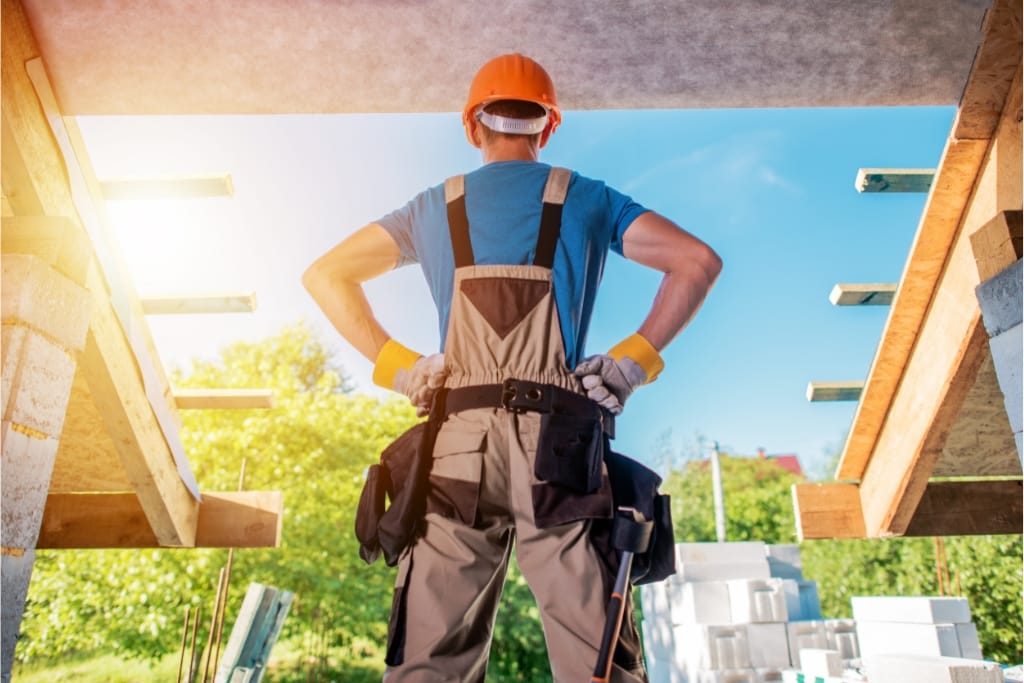Accessory Dwelling Units (ADUs) are becoming increasingly popular as a sustainable housing option.
With the growing concern for the environment, more homeowners are looking for ways to reduce their carbon footprint and live in eco-friendly spaces.
If you're considering building an ADU on your property, here are 12 ideas to help you create a sustainable and environmentally friendly living space.
1)) Solar Panels
Installing solar panels on the roof of your ADU can help reduce your electricity bills and reliance on fossil fuels.
This renewable energy source can power your lights, appliances, and heating systems while reducing greenhouse gas emissions.
2)) Energy-Efficient Appliances
Opt for energy-efficient appliances such as refrigerators, washing machines, and HVAC systems.
These appliances use less energy, saving you money in the long run and reducing your overall environmental impact.
3)) Natural Lighting
Design your ADU with plenty of windows to allow natural light to enter the space.
This not only reduces the need for artificial lighting but also creates a bright and inviting atmosphere.
4)) Green Roof
Consider installing a green roof on top of your ADU. Green roofs help with insulation, reduce stormwater runoff, and provide habitat for birds and insects.
5)) Water-Efficient Fixtures
Install low-flow toilets, showerheads, and faucets to conserve water in your ADU.
These fixtures use less water without sacrificing performance, helping you save money on utility bills while conserving this precious resource.
6)) Sustainable Materials
Use eco-friendly materials such as bamboo flooring, reclaimed wood, or recycled glass countertops in the construction of your ADU.
These materials have a lower environmental impact and add character to your living space.
7)) Composting Toilet
Consider installing a composting toilet in your ADU to reduce water usage and create nutrient-rich compost for gardening purposes.
8)) Rainwater Harvesting System
Collect rainwater from the roof of your ADU for irrigation purposes or household use with a rainwater harvesting system.
This sustainable practice helps conserve water while reducing demand for municipal water sources.
9)) Passive Solar Design
Incorporate passive solar design principles into the layout of your ADU to maximize natural heating and cooling opportunities.
Features such as south-facing windows, thermal mass walls, and shading devices can help regulate indoor temperatures without relying on mechanical systems.
10)) Efficient Insulation
Properly insulate your ADU to prevent heat loss in winter and keep cool air inside during the summer months.
Well-insulated walls, floors, and ceilings can improve energy efficiency and comfort levels within the living space.
11) Electric Vehicle Charging Station
If you own an electric vehicle or plan to purchase one in the future, consider installing an EV charging station near your ADU for convenient access to renewable transportation options.
12)) Green Landscaping
Create a sustainable landscape around your ADU with native plants, drought-tolerant species, permeable paving materials, and efficient irrigation systems that minimize water waste while enhancing biodiversity in your backyard.
Conclusion
Building an eco-friendly ADU is a wise and responsible choice that benefits both the environment and your household’s budget.
By implementing solar panels, energy-efficient appliances, natural lighting, and other sustainable strategies, you can significantly reduce your carbon footprint and enjoy lower utility bills.
Moreover, using sustainable materials and water-efficient fixtures not only conserves resources but also adds unique and eco-conscious elements to your living space.
As our world faces growing environmental challenges, adopting these green practices in your ADU reflects a commitment to sustainability and encourages a healthier, more resilient ecosystem.
Embrace these 12 innovative ideas to create a welcoming and sustainable accessory dwelling unit that aligns with your values and contributes positively to the planet’s future.
Download Our Free E-book!







